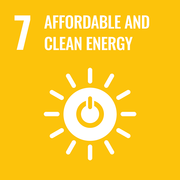
Electric mobility and remote working reduce urban pollution
How much and what, individuals living in an urban area, breathe in on a daily basis depends on several factors and is variable in space and time. Just as the responsibility, of cars, for those same emissions to which people are exposed is highly variable.
Some city streets are more polluted than others, and some private vehicles pollute more than others.
The study by researchers from the Institute of Information Science and Technologies of the National Research Council (CNR-Isti) in collaboration with the Department of Computer, Control and Management Engineering (Diag) of Sapienza University of Rome has shown that in cities such as Rome and Florence, but also London, the 10% of the most polluted streets can get to 'host' almost 60% of the vehicular emissions of the entire city, and, similarly, the 10% of the most polluting vehicles can get to be responsible for well over half of the emissions.
The research also points out that by making even just 1% of the most polluting private vehicles in a city centre electric, the resulting reduction in CO2 emissions would be equal to that achieved if 10 times as many randomly selected vehicles were electric. Similar results are obtained by using remote working to avoid systematic home-to-work travel by a portion of the population.
This is scientific evidence of how important it is to make informed choices. Measures such as the so-called alternate number plates restrictions, still in vogue until a few years ago, are incredibly less effective than emission reduction policies that instead make targeted choices, such as the more recent bans on the circulation of particularly polluting vehicles or possible incentives for electric vehicles, which should, however, be designed for those who pollute the most.
But who pollutes the most? Can we identify mobility behaviour adopted with our cars that causes more emissions? This work shows that those who move more predictably, such as on their way to work, are responsible for a more significant share of emissions than those whose mobility behaviour is more erratic and unpredictable.
This kind of research can help policymakers. "In order to devise policies to reduce vehicle emissions that are truly effective and thus succeed in having a positive impact on our cities, one needs to have a thorough understanding of the phenomenon," concludes Matteo Böhm, a PhD student at Sapienza University and author of the study. "Only with informed choices can one focus their efforts and thus achieve maximum results. We hope that studies like this can help achieve this goal'.
References:
Gross polluters and vehicles’ emissions reduction - Matteo Böhm, Mirco Nanni, Luca Pappalardo - Nature Sustainability (2022) https://doi.org/10.1038/s41893-022-00903-x
Further Information
Matteo Böhm
Department of Computer, Control and Management Engineering
bohm@diag.uniroma1.it

